|
I can read some of the hieroglyphs. There's 'gives life', there's 'lord of life and stability' (stability being the djed pillar). Also, there's 'Beloved of Set'. The pharoah is identified with Horus, and underneath the Horus falcons we read 'Strong Bull Loves Ma'at'.
Also, there's the vulture and the cobra, Nekhbet and Wadjet, "The Two Ladies", who are goddesses that represent Upper and Lower Egypt. Digitalegypt.ucl.uk/ tells more.
|
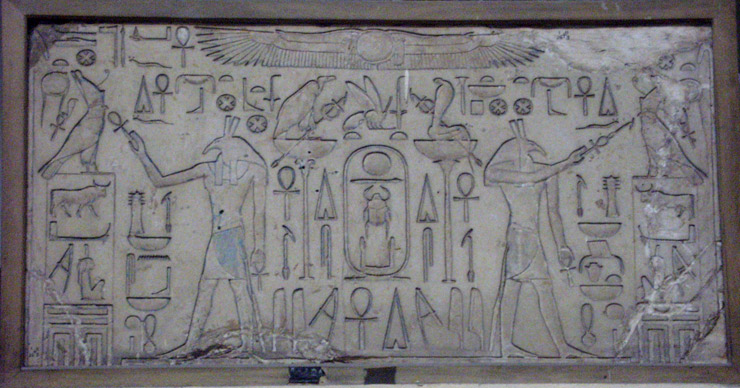
Photo (c) 2000 by Andrew W. Nourse

Set blessing Horus, (or Thutmose I as Horus), originally from the temple of Set at Naqada, now at the Cairo Museum
Line drawing by Joan Ann Lansberry, traced from photos by Andrew W. Nourse, and W.M.F. Petrie.
|
At first I thought it was from the 12th Dynasty, Senusret I (aka Senwosret I, Sesostris I).
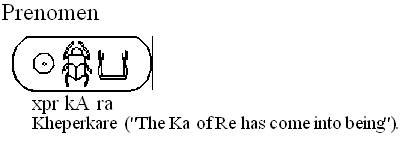
(from ancient-egypt.org
However, the hieroglyph for 'great' has been added to the relief's cartouche. I soon found the answer. As I kept searching, I found another photo of what looks to be a very similar relief:
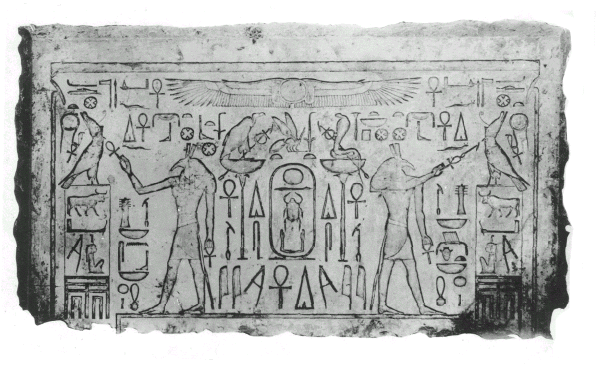
Found at digitalegygt.ucl.ac.uk/
"Relief of Thutmose I found in the temple (Cairo JE 31881)", Naqada (Nubt), Temple of Seth
their source: Petrie/Quibell 1896. W.M. Flinders Petrie, J.E. Quibell. Naqada and Ballas. BSAE I. London
This relief doesn't have the damage in the upper right, and the image of Set doesn't have holes in the tummy area.
Hmmm, Thutmose I or Senusret I? Wikipedia has another photo of this relief, this one the same as the first photo, in a wooden frame, (here if not there, photo credit 'chipdawes') Could they have shared the same name in their cartouche?
Budge's two volume dictionary features a king list, with heiroglyphs:
|


|
They DO share one very similar cartouche! However, Thutmose I's DOES have that extra hieroglyph, meaning 'great'. Also 'strong bull loves Ma'at' is part of his pharoah title. So I suspect it is his relief. In any case, it is definitely from Nubt, as there are the heiroglyphs for this town:
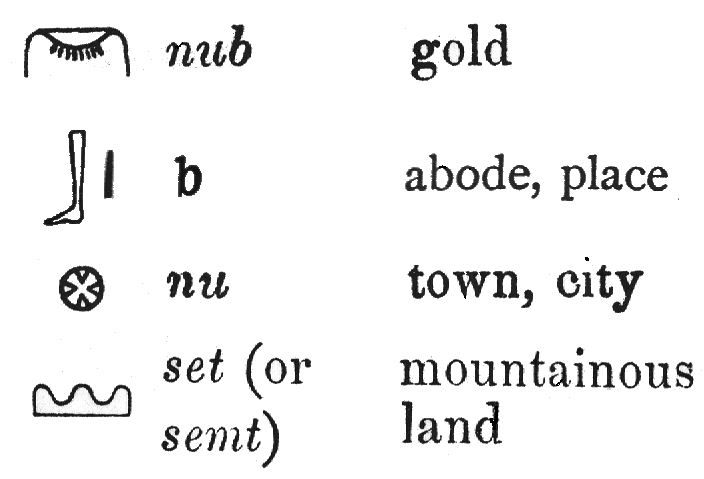
Nub - gold, nu - town, b (lower leg and foot)- abode, place, set/semt - mountainous land(from Budge's _Egyptian Language_)
"Its name derives from ancient Egyptian nub, meaning gold, on account of the proximity of gold mines in the Eastern Desert." (source Wikipedia). There's a Temple of Seth there, "which comes from the 18th Dynasty in the New Kingdom. Tuthmosis I and II, and Amenhotep II and several Ramessid kings have built at this temple. Amenhotep III placed a massive faience scepter in Nubt." (source).
"Naqada was the necropolis of the town of Nubt, the town of gold, known in Greek as Ombos. It had been devoted to the god Set, or Set of Nubt, Nubty, as he is called in the Pyramid Texts, and as evidenced by inscribed blocks found at Naqada." (source touregypt.net)
Also, I found an inscription of Pepi I, pharaoh about 3200BCE, on his pyramid:
"If the name of Set, the dweller in Nubt (Ombos) flourisheth, then the name of Pepi shall flourish, and this his pyramid shall flourish, and this his building shall flourish unto all eternity!"
(Source _Egyptian Magic_ by E. A. Wallis Budge quoted at sacred-texts.com
Digitalegygt.ucl.ac.uk/ features two "relief fragments (door-jambs) from the temple (now in the Petrie Museum)":
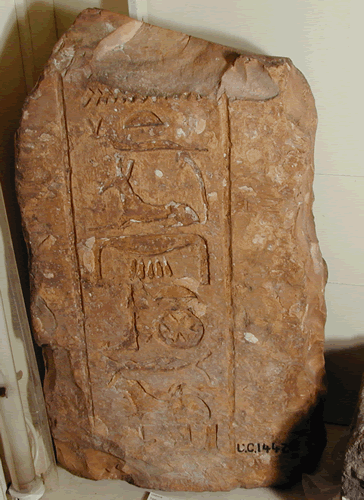
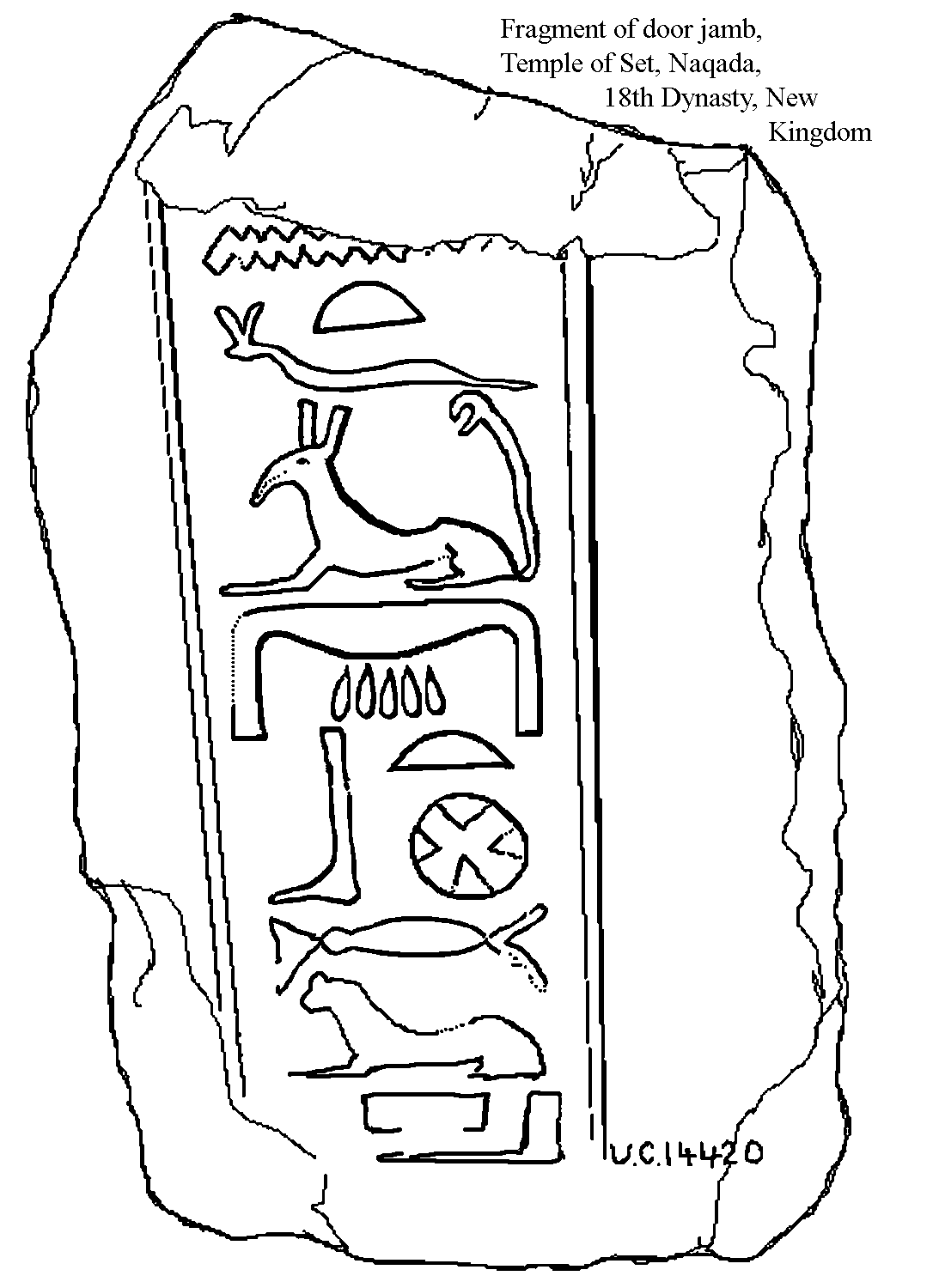
Trace of this door jamb fragment

The photographer Heidi Kontkanon gives us a really good photo
With the better details, I'm going to need to revise my trace...
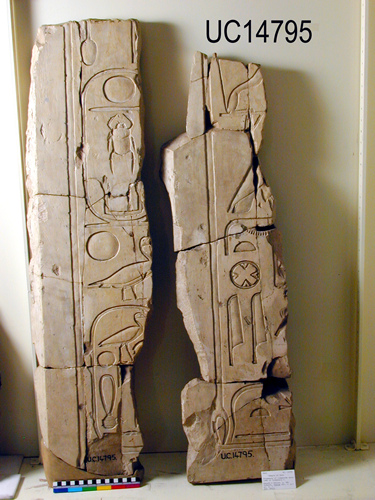
Yes, in spite of the damage, we can read the cartouche of Thutmosis I !
|
  
|











